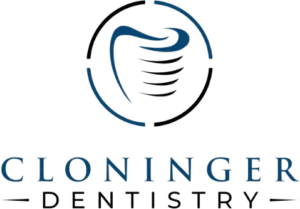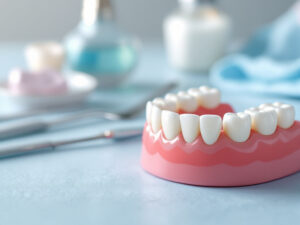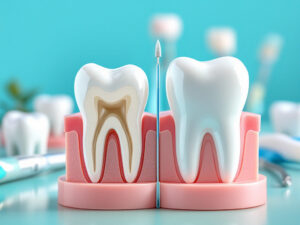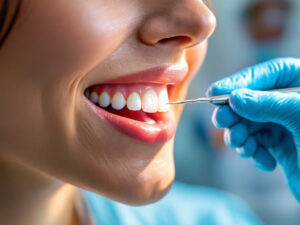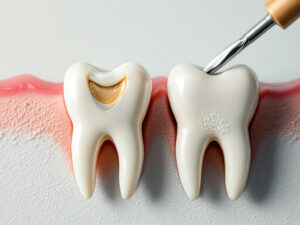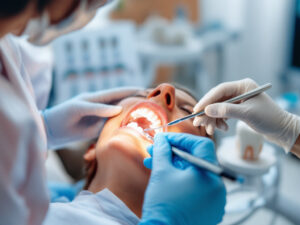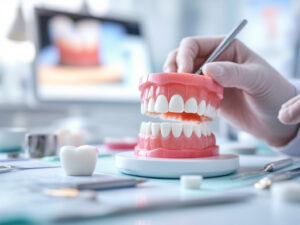At Cloninger Dentistry, we understand that the idea of having a tooth removed can feel daunting. You may wonder what to expect, how much discomfort is involved, and how you will recover. Our goal is to provide you with a warm, reassuring environment where all your questions are answered. When you need a simple tooth extraction, our attentive team approaches every step of the process with compassion and expertise. We respect that each patient has unique circumstances, and we take pride in offering a tailored approach to address your concerns and ensure lasting oral health.
Whether you are visiting us for routine dental care or seeking a solution for a specific tooth concern, our entire practice focuses on your comfort, well-being, and long-term results. We know that choosing the right dental provider is a deeply personal decision. By combining state-of-the-art technology with a comprehensive care philosophy, we help you achieve a confident smile and maintain a healthy mouth for years to come.
Below, you will find everything you need to know about simple tooth extraction and why Cloninger Dentistry is trusted for this procedure. We will walk you through common reasons for extraction, outline exactly how the process unfolds, discuss essential aftercare tips, and explain how we incorporate advanced treatment options. Finally, you will learn how our practice’s supportive and empathetic atmosphere can ease your anxiety, reduce discomfort, and enhance your overall oral health experience. We are here to guide you every step of the way, ensuring you gain both knowledge and peace of mind.
Understand simple tooth extraction
A simple tooth extraction involves removing a tooth that is clearly visible above the gum line and fully intact. Unlike surgical extractions, this procedure does not require incisions or complex maneuvers to access the tooth. Instead, your dentist uses specialized tools to gently loosen and lift the tooth from its socket. This minimally invasive approach is typically performed under local anesthesia, so you can remain comfortable and pain-free during the process.
What makes it “simple”
In a simple tooth extraction, the tooth is not impacted, broken below the gum line, or obstructed by excessive bone. Because the tooth crown is viable and accessible, forceps alone are usually sufficient. The gums generally remain intact as no incision is necessary to access hidden structures. According to Medical News Today, most simple extractions should heal within a couple of weeks, and they rarely require the placement of stitches. This quick recovery time is why simple removals often appeal to patients who want a fast, straightforward procedure.
When simple is enough
Your dentist may recommend a simple tooth extraction if your tooth is:
- Severely decayed or causing pain
- Loose due to gum disease
- Creating overcrowding in your mouth
- Slightly fractured but still sitting above the gum line
Removing a problematic tooth can alleviate discomfort, stop infection from spreading, and prevent future complications. If the tooth does not warrant more complex oral surgery, a simple extraction is generally the most efficient solution.
Balancing emotions with oral health
We understand that, even if the extraction is straightforward, any dental procedure can stir up anxiety. Being nervous is perfectly natural. We address these concerns by fostering a supportive environment where you are greeted by a team ready to listen and respond to your worries. Through open communication, sedation options when needed, and empathy at every appointment, we strive to transform what may feel like a stressful experience into a smooth, manageable step toward better oral health.
Recognize common reasons
Sometimes, understanding the “why” behind your extraction can help reduce uncertainty. You might need a simple tooth extraction for a variety of reasons. Below are the most common ones:
-
Tooth decay
If decay extends too deep into a tooth’s structure, routine treatments like a painless cavity filling or root canal therapy might not be enough to save it. Removing the deteriorated tooth is often the best way to protect the surrounding healthy teeth and gum tissue. -
Overcrowding
Overlapping or crooked teeth can sometimes be resolved by removing a single tooth, freeing up space for orthodontic alignment. According to Artistic Touch Dentistry, teeth that shift sideways or fail to emerge correctly may need extraction to create room for proper placement. -
Gum disease
Advanced gum disease (periodontitis) may loosen certain teeth beyond what supportive treatments can correct. If a tooth cannot be saved by a gum disease treatment or related therapies, extraction helps eliminate potential sources of infection before it worsens. -
Trauma or injury
A tooth that suffers a hard blow during sports or daily accidents can sustain irreparable cracks. In such instances, removing the damaged tooth helps prevent infection and ongoing pain. As Artistic Touch Dentistry notes, severe fractures sometimes leave extraction as the only solution. -
Preventative measure
Sometimes a dentist may suggest removing even a non-painful tooth to preempt further complications. This strategy is especially common if the tooth is at high risk of infection or will inevitably affect adjacent teeth.
Recognizing these common reasons can give you a better handle on your situation. It also underscores the importance of regular dental checkups, where early detection of problems often provides more conservative solutions like professional teeth cleaning, fluoride treatment, or minor restorations. However, if the tooth simply cannot be saved, opting for a simple tooth extraction early on can prevent complications that would otherwise lead to more extensive procedures down the road.
Navigate the procedure
At Cloninger Dentistry, we believe that the better you understand the extraction process, the more comfortable you will feel. A simple tooth extraction typically unfolds in a few clear steps aimed at ensuring your comfort and safety.
Consultation and preparation
Before any tooth extraction, one of our dentists will review your medical history, analyze recent x-rays or digital xray imaging, and discuss your treatment plan. This thorough evaluation helps us anticipate any potential challenges and tailor the procedure to your unique needs. If necessary, we might use 3d imaging dental diagnostics to gain detailed insights into your tooth’s position and bone structure.
During the consultation, we encourage you to voice any concerns about pain, anxiety, or the recovery timeline. We may offer sedation options or mild anti-anxiety measures to help calm your nerves. Our goal is to create a nurturing environment where you feel listened to from start to finish.
Administering local anesthesia
On the day of the procedure, you will be given an injection of local anesthetic around the tooth requiring removal. This numbs the area and prevents pain. For straightforward cases, local anesthesia alone is sufficient. If you are particularly anxious or if the tooth is more sensitive, we can discuss additional sedation options. We never want you to feel overwhelmed by discomfort, and we take pride in our gentle approach that prioritizes your well-being.
Loosening and removing the tooth
After the area is numb, your dentist will use a tool called an elevator to gently loosen the tooth in its socket. This process expands the bone around the tooth slightly and severs the periodontal ligament. Next, the dentist will use forceps to lift and remove the tooth. Because the tooth is fully visible and accessible, there is no need for incisions into the gum tissue.
Most patients report minimal pressure or mild pulling sensations, but no sharp pain. The entire removal process is generally quick, often completed within minutes once the tooth is fully loosened. If at any point you begin to feel discomfort, your dentist can pause and administer additional local anesthetic. Your comfort is always our top priority.
Controlling bleeding and closing
Immediately after the tooth is out, your dentist will place gauze over the extraction site to reduce bleeding and help form a blood clot. As Medical News Today explains, this clot is essential for healing because it protects the underlying bone and nerves. Usually, a simple tooth extraction does not require sutures. With consistent pressure on the gauze for a short period, bleeding should subside within the first 24 hours.
During this point, we also verify that the socket is stable, the surrounding teeth are not compromised, and you experience no unexpected pain. Once the extraction site looks secure, we review aftercare instructions to help you recover quickly and comfortably.
Prepare for recovery
Post-procedure care is vital to preserve a healthy extraction site and encourage swift healing. While every patient is different, it is still helpful to understand a broad recovery timeline and effective aftercare strategies. By following your dentist’s recommendations, you can maximize your comfort and reduce the risk of complications.
First 24 hours
During the first day, you may experience mild bleeding, swelling, and tenderness in the extraction area. According to Oral & Maxillofacial Surgery of Carbondale, a blood clot typically forms shortly after the tooth is removed, helping the wound to seal. We will provide you with extra gauze to place over the site if any minor bleeding continues. Using an ice pack for 15-minute intervals can help minimize swelling and ease discomfort.
Subsequent 1-2 weeks
Over the next few days, your gums begin knitting together and sealing the socket. Try to avoid using a straw, smoking, or forceful spitting, as these actions can dislodge the protective clot. Gently rinsing your mouth with warm saltwater can help reduce inflammation and keep the area clean. By the end of one to two weeks, the clot will transition into early gum tissue formation. Pain should continue to subside, although the extraction site may feel tender for a while.
Meticulous oral hygiene
Maintaining good oral hygiene after an extraction is essential. We recommend continuing regular brushing and flossing, taking care to avoid overly vigorous activity near the extraction socket. This can help you prevent infection, encourage healing, and maintain a healthy mouth. If you have existing orthodontic devices or other specialized equipment, ask us about specific care instructions so you can protect the extraction site effectively.
Resuming normal activities
Within about two weeks, most patients feel comfortable returning to a normal routine. Any persistent tenderness typically subsides, though you may experience slight sensitivity to very hot or cold foods. Keeping an eye on your extraction site is crucial—report any unusual pain, foul taste or smell, or excessive bleeding to your dentist immediately. Being proactive helps you promptly address potential issues like dry socket or infection.
Follow-up visits
Depending on your situation, we may schedule a brief follow-up appointment to check on the healing progress. During this time, we verify that your gum tissue is forming a healthy seal and ensure surrounding teeth have not been negatively affected. We also provide personalized advice for your unique needs, including suggestions for additional treatments, such as periodontal maintenance cleaning, dental crown placement, or dental bridge placement if you require restorative work down the line.
Consider advanced options
In some instances, a tooth that seems appropriate for a simple tooth extraction might reveal hidden complexities, such as an unusual root shape or partial impaction. If you face a more complicated scenario, we may recommend a surgical tooth extraction. This advanced method goes beyond the simpler approach by requiring a small incision or lifting of gum tissue to access the tooth or bone.
When surgical extraction is necessary
A surgical extraction is typically necessary when:
- A tooth is broken at or below the gum line
- The tooth is partially or fully impacted
- Root structures are curved, twisted, or fractured
- Surrounding bone blocks access to the tooth
This approach may involve sedation or anesthesia to keep you comfortable, as well as sutures to close the site once the tooth is removed. While the procedure is more extensive, it addresses advanced conditions and preserves your overall oral health.
How Cloninger Dentistry helps
Should you require a surgical extraction, you are still in caring hands at Cloninger Dentistry. Our goal is not only to remove the problematic tooth but also to maintain your mouth’s overall function and aesthetics. We make every effort to ensure you have access to the support you need throughout this more intensive endeavor. This might include pain management protocols, postoperative checkups, and restoration options such as porcelain crown service or [dental implant placement] (if implants are a choice you wish to explore, though they are not listed as an internal link). We aim to present all viable solutions so you can make a well-informed decision about your oral care.
Beyond extraction
To ensure you do not encounter bite misalignment or challenges like bone loss, we may discuss adding restorative solutions to fill any gaps left by removal. While we share a strong commitment to conservative dentistry—aiming to preserve your natural teeth whenever possible—we also believe in providing comprehensive options for every patient. Whether through a partial denture or more permanent solutions, our team helps you avoid long-term complications and maintain a balanced smile.
Choose Cloninger Dentistry
At Cloninger Dentistry, we believe that your oral health journey should be as positive and supportive as possible. Our team merges clinical expertise with genuine care so you can trust us with all your dental needs, including simple tooth extraction. We appreciate that every individual has unique problems, anxieties, and treatment preferences. Our approach is designed to meet you wherever you are in your dental journey.
Comprehensive family care
We know that healthy smiles often start with preventive measures. Our practice provides everything from pediatric dental care to routine dental checkup appointments for the entire family. By addressing issues quickly and deliberately, we help you avoid the unnecessary complications that often accompany neglected oral health. Along with extractions, we offer:
- Professional teeth cleaning
- Fluoride treatment
- Oral cancer screening
- Gum disease treatment
We tailor each of these services to meet your evolving needs, reinforcing that ongoing care is just as important as any procedure you receive once a problem arises.
Cosmetic and restorative dentistry
In addition to general care, we specialize in cosmetic and restorative solutions to keep your smile looking its best. Services such as porcelain crown service, custom denture fitting, and broken tooth repair ensure that you receive aesthetically pleasing and fully functional results. If, for instance, a tooth extraction leaves a gap in your smile, our restorative options can help fill that space in a way that complements your bite and appearance. Every step reflects our commitment to preserving not just your oral well-being but your confidence too.
Empathy and patient-centered approach
Patients often talk about the welcoming atmosphere they experience at Cloninger Dentistry. We understand that oral care can sometimes feel uncertain or intimidating. Our front office staff, dental hygienists, and dentists take extra time to speak with you personally. We clarify each step, discuss potential discomfort, and work with you to find the perfect balance between necessary medical procedures and your peace of mind.
We also extend our empathy by providing sedation options for those who battle dental anxiety. Feeling anxious before a procedure is entirely natural, and our team is trained to help you relax. By combining gentle techniques with sedation or local anesthesia, we ensure that even more involved procedures can be handled with minimal stress. It is this holistic approach—balancing state-of-the-art dentistry with emotional support—that helps you feel truly taken care of every time you visit.
Caring for the whole family
Children, teens, and adults all have distinctive oral health challenges. Our dentists adapt to your family’s developmental stages, whether you are scheduling your child’s first tooth exam or helping an elderly parent address loose or decaying teeth. By adhering to a preventive model of dentistry, we can spot potential extractions earlier, manage them with minimal disruption, and collaborate with you to keep your family smiling with confidence.
Insurance and financing
We strive to make paying for an extraction or any dental service as straightforward as possible. Cloninger Dentistry is an insurance friendly dental practice. We offer transparent dental pricing and provide a written treatment estimate so there are no surprises about cost. If you do not have dental insurance, flexible financing dental options are available to help you restore your oral health without straining your budget. This combination of practicality and empathy underscores our dedication to ensuring affordability for our valued patients.
Review frequent questions
Below are five of the most commonly asked questions we hear about simple tooth extractions. If you have other concerns, let us know—we are always here to help.
-
How painful is a simple tooth extraction?
You will receive local anesthesia to numb the area around the tooth, which means you will not feel sharp pain. You may experience pressure as your dentist loosens and removes the tooth, but most patients describe it as mild or easily tolerable. If you experience dental anxiety, we can discuss sedation options so you remain comfortable from start to finish. -
How long does it take to heal?
Recovery times vary from person to person, though many simple extractions heal within one to two weeks (Medical News Today). Initially, you may notice swelling or tenderness in the first 24-48 hours, which then subsides significantly over the following days. By adopting good oral hygiene habits and following our aftercare instructions, you can reduce the chance of complications and promote quicker healing. -
Will I need a replacement for the extracted tooth?
It depends on your individual circumstances. If the removed tooth does not impact your bite alignment, a replacement may be unnecessary. However, for teeth in more visible or structurally important areas, we might recommend a restorative treatment like dental crown placement on an adjacent tooth, or bridging the gap with a partial denture service. We can discuss all available options during a private consultation. -
Can I prevent future extractions?
One of the best ways to minimize the need for future extractions is through consistent preventive care, including routine dental checkup appointments, thorough brushing, flossing, and a balanced diet. Addressing minor cavities quickly and managing gum disease through regular periodontal maintenance cleaning also reduces the likelihood you will lose additional teeth. Early intervention is key. -
Does insurance cover a simple tooth extraction?
Many insurance policies offer partial or complete coverage for extractions, especially if they are considered medically necessary. Because plans differ widely, our staff at Cloninger Dentistry will verify your benefits and provide a written treatment estimate before your procedure. If you are uninsured or underinsured, we can explore flexible financing dental solutions that fit your budget.
At Cloninger Dentistry, our mission is to deliver personalized, compassionate care that addresses both your immediate dental issues and your long-term oral health goals. If you suspect a tooth might need removal, we invite you to visit our office so we can perform a thorough evaluation and discuss your options. Every patient who walks through our doors receives not only dedicated clinical expertise but also empathetic, supportive interactions that set us apart.
A simple tooth extraction might feel intimidating at first, yet with the right dental team by your side, each phase is manageable. From the initial consultation and understanding possible alternatives, to relaxation strategies during the procedure and highly personalized aftercare, we focus on making this process as smooth as possible. We want you to leave our practice feeling relieved, confident, and well-informed about your next steps in achieving a healthy, beautiful smile.
Our dedicated staff is here to guide you toward treatments that match your unique situation, whether that means pursuing a straightforward, minimally invasive approach or considering advanced options. We are grateful for the opportunity to offer our help and knowledge every time you walk into Cloninger Dentistry. Remember that you do not have to navigate these decisions alone. Let us know how we can assist you, and together, we will make improvements to your oral health that last well into the future. We look forward to serving you and your entire family with expert care and genuine compassion.
